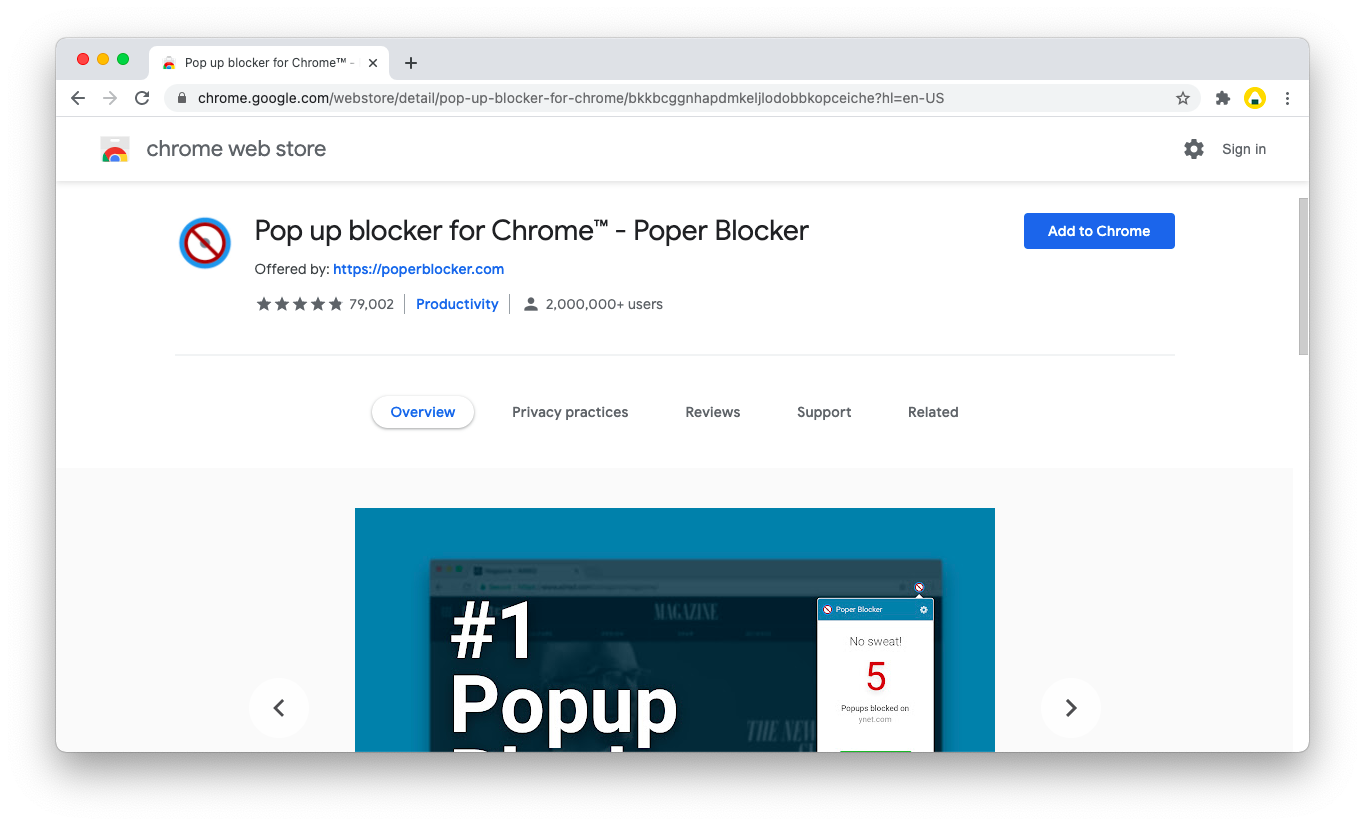

- #Chrome extension popup window how to#
- #Chrome extension popup window install#
- #Chrome extension popup window archive#
#Chrome extension popup window archive#
After you finish development, you will need to pack the extension folder to an archive with a. In Chrome extensions terms it is called unpacked extension. When you develop an extension, it has a form of a folder with files.
#Chrome extension popup window install#
Then, let's just install this extension to Chrome. So, let's create the image_grabber folder and put the manifest.json file with that default content. This minimal extension will have a default look and will do nothing until we define other parameters: icons, action, permissions, and background. You can see a full list of options that can be specified in the manifest.json file in the official documentation.Ī folder with a single manifest.json file is a minimal runnable Chrome Extension that can be packaged, installed to Chrome, and distributed. In this example, I described the Image Grabber extension, which will extract links of all images from a current browser page. Values of other parameters are up to you, they should clearly describe your extension and its version.

The only required parameters are name, description, version and manifest_version. This is an example of a basic manifest.json file that can be used as a template when start creating any new Chrome extension:Įnter fullscreen mode Exit fullscreen mode Minimal Chrome Extension consists only of the manifest.json file. Google Chrome Extension is a web application, that can contain any number of HTML pages, CSS stylesheets, JavaScript files, images, any other files and a manifest.json file in the same folder, which defines how this particular extension will look and work.
#Chrome extension popup window how to#
In the second part I will show how to extend the interface of the extension to select and download grabbed images as a ZIP archive and then explain how to publish the extension to Google Chrome WebStore. This is only the first part of this tutorial. During this process, you will know about foundational parts of the Google Chrome extension that can be reused to build an extension of any kind.īy the end of this article, you will build an extension that looks and works as shown in this video. The resulting extension will provide an interface to connect to a website, read all images from it, grab their absolute URLs and copy these URLs to a clipboard. In this article, I will guide you through the process of building an extension named Image Grabber.

This feature can be used for a wide range of browser automation tasks like scrapping required information from websites or automating web surfing, which can be useful to automate user interface testing. Using these APIs you can not only read content from web pages but also write content to them and interact with these pages, like, for example, automatically pressing buttons or following links. The extension which we will create today will use Chrome APIs to get access to the content of web pages, which opened in a web browser and extract different information from them. In this article, I will show, how to create a Chrome Extension from scratch. Usually, to install a Chrome Extension, a user should open Chrome Web Store, find the required extension, and install it from there. Get information about the active browser tabĬhrome Extensions are small programs, that can be installed to Google Chrome web browser to enrich its features.


 0 kommentar(er)
0 kommentar(er)
